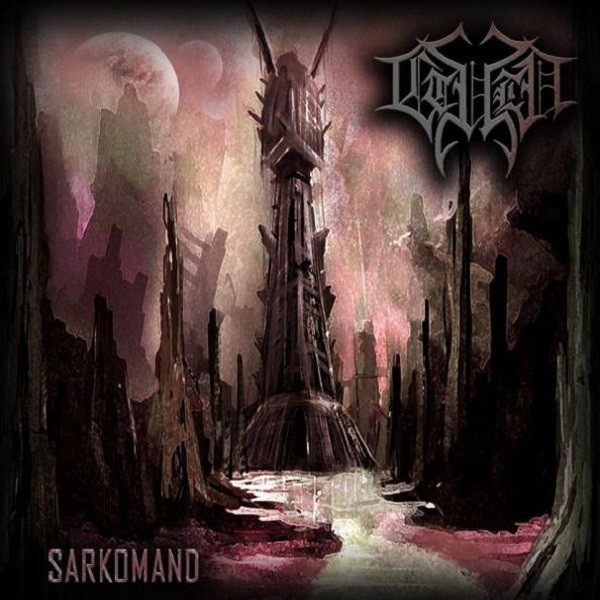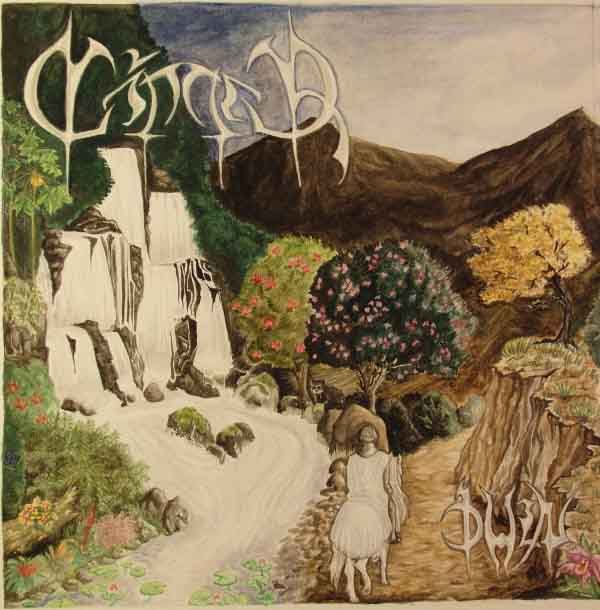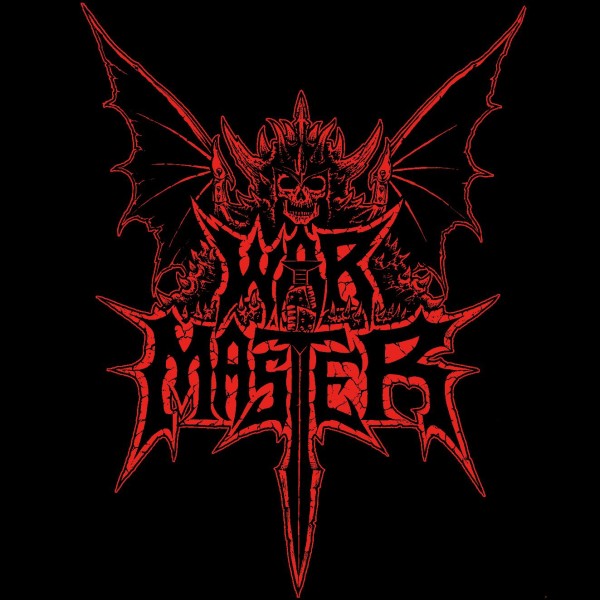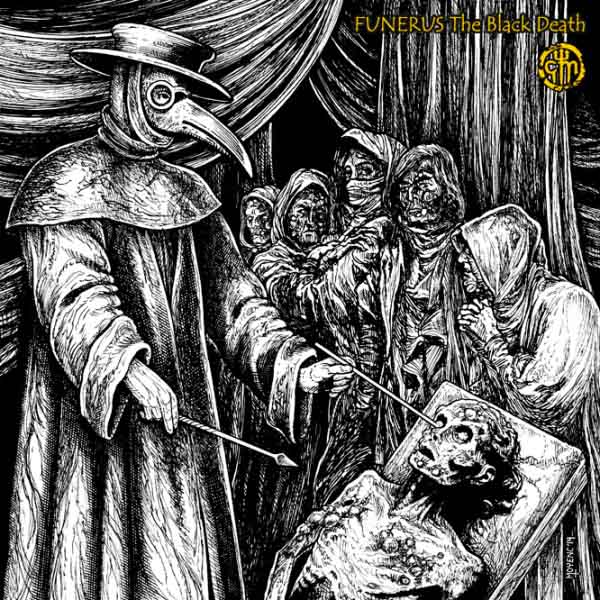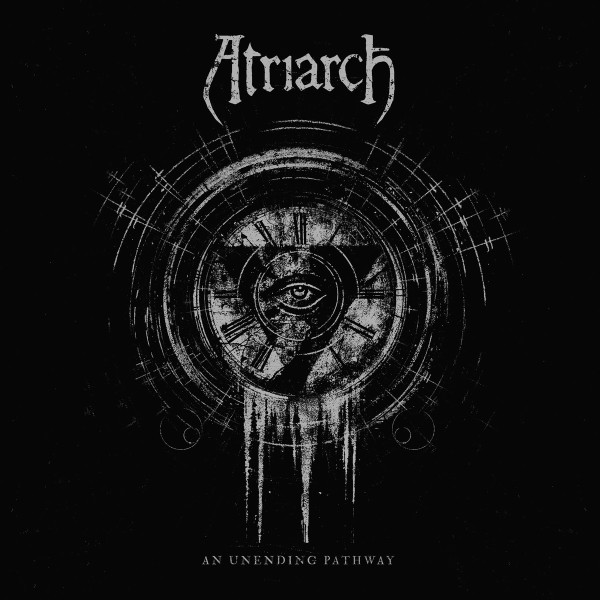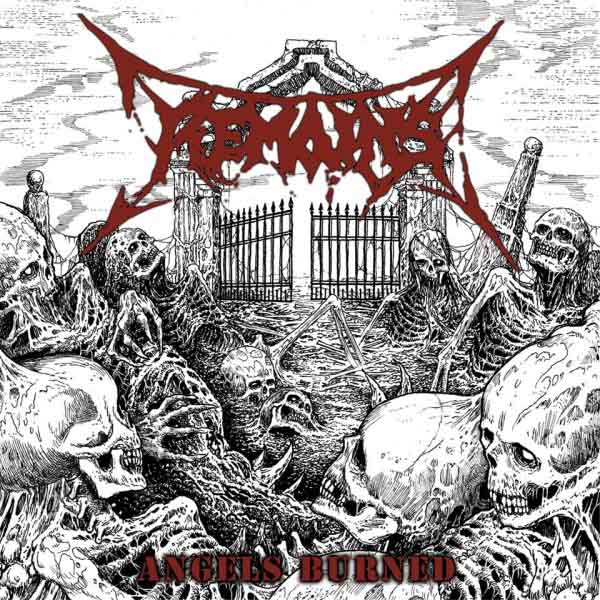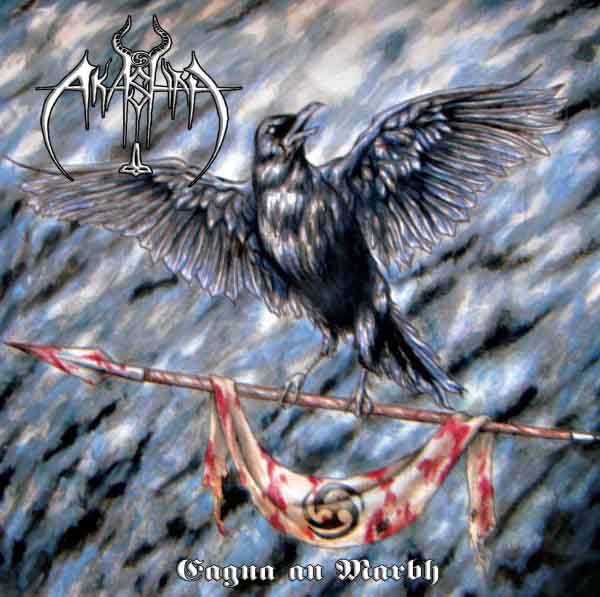
The music fan possesses limited resources to achieve the goal of an enjoyable listening experience: time, money and energy. Reviewers tend to write about how cool everything is, but they should be writing about how mediocre most albums are so they can focus on the few that can be enjoyed for the next few years at least. It is hard to be cruel, but it is kinder than kindness. With that I introduce our latest round of Sadistic Metal Reviews…
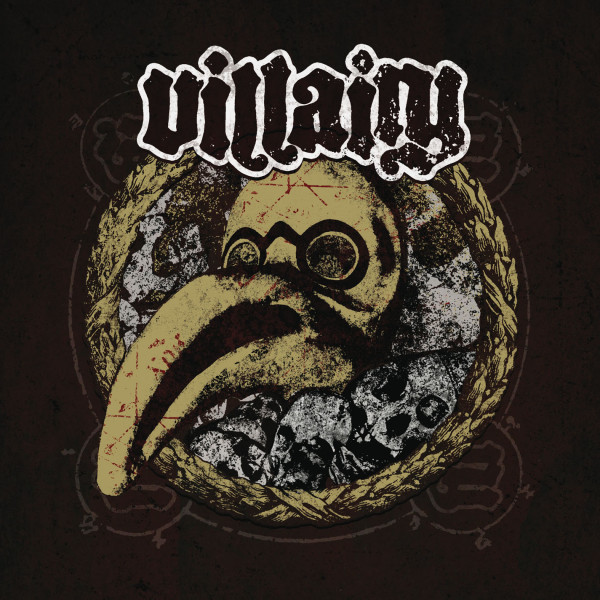
Villainy – Villainy I
This enjoyable little romp reminds the death metal listener of later Sentenced crossed with the Venom-worship of Nifelheim and other bands who, in the old school days, were simply referred to as Venom tributes. Heavy metal genre riffing, combining the best tropes of the late 1970s and early 1980s, meets a harsh Cronos-styled vocal and updated technique. Nothing sloppy here; the band are tight and the arrangements show no spurious detail. However, despite the somewhat harsh vocals, like Venom this is NWOBHM and 1970s heavy metal revivalism without any particular relevance beyond that era. It skips speed metal textures for a death/black metal styled fast strum and continuous drumming as if taking notes from Merciless, and injects melody, but mostly stays within verse-chorus with introductory and transitional riffs different. The riff forms will be familiar to fans of heavy metal from that era. Lead guitar strikes a pentatonic blitz that is both enjoyable and very much within form. Unlike Merciless however this album focuses on writing hard rocking tunes and does not develop an evolving mood or atmosphere beneath.
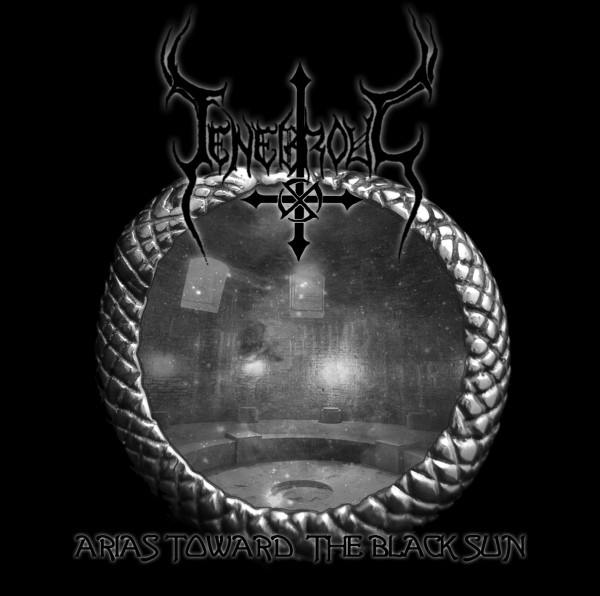
Tenebrous – Arias Toward the Black Sun
Underground metal needs a new trope for a certain type of composition which appears frequently among our ranks. I dub this “80s situational comedy” after the movies where a character makes a bad decision, then to hide it chooses another bad option, then deceives and conceals in a string of events leading to absurdity and eventual plot collapse. Sitcom metal occurs when a band finds a riff they like and write other riffs to fit that riff without having an awareness of what the riff communicates emotionally to the listener, thus what the song is actually about, and so you end up with a cool riff and reactions to that riff which are designed to put it into context but ultimately have the opposite effect. Tenebrous fits this pattern through its work in a style that combines a whole lot of Graveland with some of the more aggressive strains of black metal. They have mastered the basic flowing riff, but not building a song around it, only building a song commenting on it. This is underscored by the cover of “Unpunished Herd” which ends the album and makes the rest of it look incoherent in contrast.
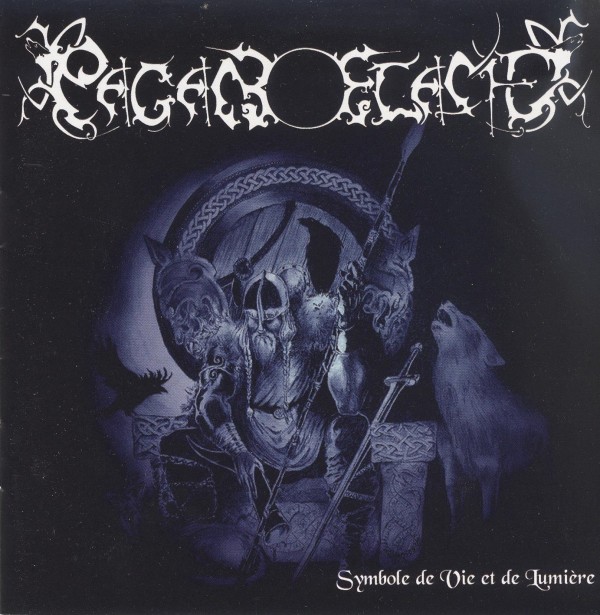
Pagan Flames – Symbol de Vie et Lumiere
This atmospheric black metal band combines Burzum-styled lead folk melodies over sweeping guitar riffs. Its strength is its melodic composition; its weaknesses are its vocals, which focus on rhythms that are too obvious and thus trite, and its tendency to try to work slamming full-stop and bounce rhythms into what should be a more continuous architecture. Barring those two disadvantages, Symbol de Vie et Lumiere presents black metal that unlike most recent efforts tries for the ancient, melancholic and epic warlike sound that made this genre popular before idiots invaded with thinly-disguised rock music to keep the mouth-breathers occupied. Many of these songs verge on being folk music itself and like the Darkthrone sidepoject Storm, feature trudging rhythms over which pagan lyrics are chanted to volkisch-reminiscent melodies. The fractured aesthetic presented by the overly busy vocals and tendency toward self-interruption with choppier rhythms narrowly keeps this album from being top tier but it distinguishes itself on its essence — attempting to write actual music through melody — from the formless legions of tryhards, shoegazers and hard rockers trying to use black metal as a vehicle for their own failed prior attempts at other genres.

Skrømt – Sjelebrann
Not since Disharmonic Orchestra Not to be Undimensional Conscious has a hybrid of this variety yet which retained its ability to express itself been cast among the metal minions. Skrømt combine alternative metal, post-metal, rough punk and older black metal influences (Ancient, Enslaved) into a form which keeps the catchy songwriting of indie rock bands but fleshes it out with a rich backdrop of shifting harmonic texture and, like metal, combines multiple riffs into chains to create a moveable part of a narrative. For the most part, songs stick to verse-chorus as augmented by background material and sometimes with a second instrumental chorus to expand upon the first loop. Like alternative metal, songs guide themselves through the vocals and the presentation of lyrics in a combination of shouted, sung and harsh vocals. Where this goes wrong is that rock and metal do not mix on an aesthetic and thus artistic level, and so the end result is rock gilded with metal riffs which are quickly absorbed, and some of the best work of this album exists in the shadow of the alternative rock tropes that it stands far superior to. This is unfortunate as clearly many good ideas and musical insights went into this album. Most inspiring in this release is the technical work applied to making the various riffs and styles fit together. It is rare for a band to understand how to connect different emotions together without following a blatant formula, but Skrømt stitches together multiple moods and styles into a coherent whole on a musical level, even if making it work on an aesthetic level seems difficult.
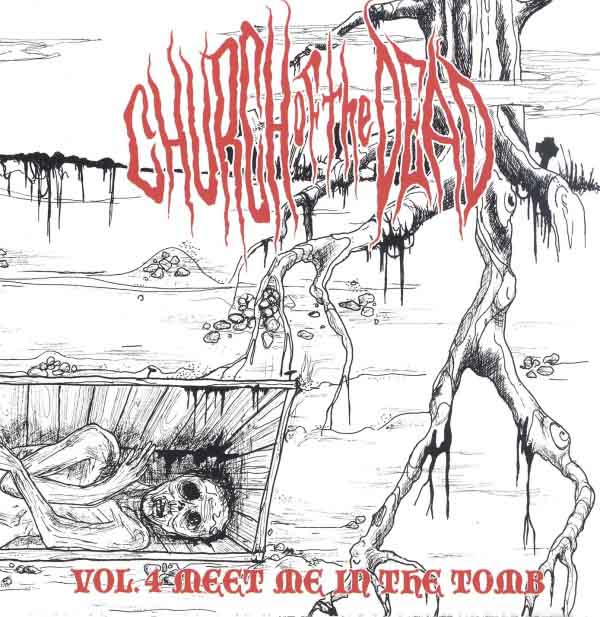
Church of the Dead – Vol. 4 – Meet Me in the Tomb
The term “cultural appropriation” seems trendy these days but few realize what it means. Blatant theft of the cultural methods of another group is too easily detected, so people appropriate those cultural methods by translating them into a form that most will not recognize. In this case, while Church of the Dead clearly uses death metal riffs and death metal vocals, its vocal rhythms are influenced by rap and its riff rhythms are closer to Motown than standard issue death metal. Thus while this disc shows some musical promise, it remains a confused aberration that wants to be in one genre but keeps itself in another, losing the spirit and atmosphere of that genre. Each piece tends to feature both Cannibal Corpse style trope cadence rhythm vocals and sing-song jingle-style vocals, making these hard to listen to without a wincing cringe, but also internalizes groove to the point where riffs take a basis in Morbid Angel and Malevolent Creation and become closer to Pantera. As a result, despite the many positives for this album, the overall negative is that its overall presentation is bouncy, poppy, and very much “rock” and not metal in form.
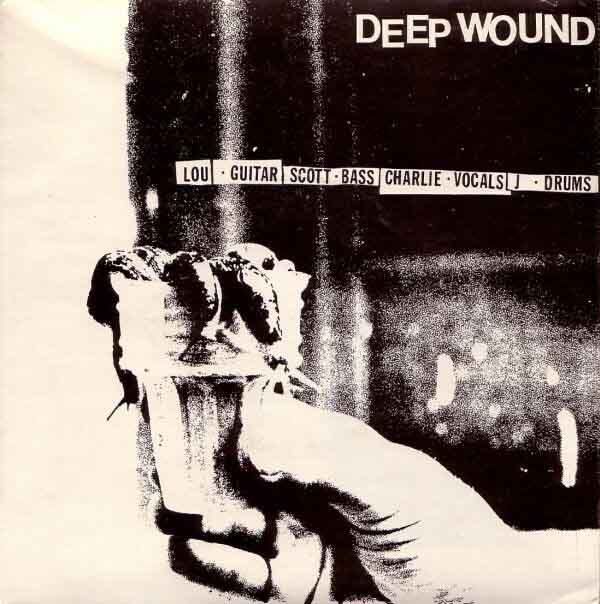
Deep Wound – Deep Wound EP
At some level all hardcore punk approximates the same thing because the genre solidified certain tropes and combined with the mathematical limitations on complexity, these defined the variety of punk songs. Deep Wound creates songs that sound either like Black Flag without the dissonance, or early Corrosion of Conformity without so many pauses. The vocals strikes a jaunty and sarcastic pause when they are not in full blur mode. As far as thrash goes, this is closer to the punk side like the first DRI LP, and its riffs are less metal than hardcore in minor key, but it beats the recent “crossover thrash” rebranding that verges too much on speed metal territory and becomes either tame or inanely jingle-y as a result. The hardcore spirit lives faithfully in this music but because of the vast similarity of hardcore, it also does not stand out in any particular way — riffs are not radically different, nor song forms, nor even vocals — so qualifies as a fun listen but not as definitive as the albums from DRI, Cryptic Slaughter and COC that defined thrash as a genre. However, this stands head and shoulders above the “party thrash” of recent years and by coming at the genre from the hardcore side, brings in an energetic simplicity that metal riffs make too complex to self-sustain.
###
Nidsang – Into the World of Dissolving Flames
- Basic black metal combined with Angelcorpse-style aggression, but leaning on the latter for songwriting. As a result, not much atmosphere but plentiful aggression. Melodic riffing adds some depth but consistent song form and intensity rob this album of much enduring power.
Aborted – The Necrotic Manifesto
- Aborted took their high-intensity low-complexity grind and gave it the modern metal (a/k/a deathcore) treatment which made it more chaotic. The more elements you add, the more internal complexity (melody, structure, theme) you must have or you reduce your core complexity to nothing, which is what happens here. Catchy chorus + two grinding riffs + hard rock influences.
Abysmal Dawn – Obsolescence
- Workable death metal with heavy metal influences in abundant lead soloing, melodic riffing and catchy choruses. Very paint-by-numbers however with not much of an intent to put anything into a song but energy and internal cohesion. Good riffs give it strength but do not make it compelling; modern-metal-style chanted choruses ahead of the riff also increase frustration.
Cemetery Fog – Towards the Gates
- This attempt at Paradise Lost-styled doom metal is both well-composed and artistically relevant, but highly cheesy from the use of melodies that directly gratify pop instincts to the occasional female vocals which aesthetically create the type of cheese that Motley Crue could only dream of. Songs are well-written and express a unique form and content for each, even though they drone on through a series of heavy metal riffs slowed down and are united by a melodic lead shadowed by vocals. While not bad, this makes the album as a whole somewhat sentimental in the sort of obvious Thomas Kinkade calendar way that drives away people like me, but it would be remiss to not notice the quality of songwriting here.
Abigor – Leytmotif Lucifer
- Black metal needs to stay black metal. Abigor try to work in late Gorgoroth through early Deathspell Omega influences and it makes their already spotty music more spotty. Some good melodies, no continuity, too much style.
Aevangelist – Writhes in the Murk
- Imagine Teitanblood with melodic riffing and slowed down to fast mid-paced death metal. The one cool effect here is the use of abrupt transitions to create a theatrical effect, but the lack of underlying riff and song consistency makes even this seem hollow.
Bethlehem – Hexakosioihexekontahexaphobia
- Most will notice the creeping Rammstein influence: clean vocals, more dance-able beats, more pronounced use of German lyrics. However, a good deal of this sounds like recent Absurd as well with more of a folk influence creeping in and while the rhythms are more popular music friendly, they are far from industrial, and what appears instead more resembles NWOBHM with more groove than the quasi-modernist sound of Rammstein. Otherwise, the riff wizardry remains but is muted, with more emphasis on vocals and repetitive choruses, but generally these songs fit together well musically and develop an internal melodic sense that produces a multifacted atmosphere.
Agatus – Dawn of Martyrdom (re-issue)
- Sort of like a cross between Legion of Doom and old Rotting Christ, Agatus uses the full punk style of even strumming speed creating droning riffs. These are pleasurable in themselves, and fit together well in songs, but they are both too obvious as melodies/phrases and too similar as rhythm riffs to make this work. In addition, many of the melodic choices here are simply rudimentary crossing into bad. This could have been an epic album if a more critical eye had been applied during composition.
Acheron – Kultes des Hasses
- The challenge to Acheron has always been to overcome their cadenced rhythm that comes to a full stop in perfect symmetry, sounding a bit like a child’s song. On this latest album they work up the usual assortment of great riffs in bad rhythm and occasional disorganized order.
Baphometh – In the Beginning
- Essentially speed metal with plenty of repetition, catchy choruses and circular song structure, this band nonetheless adopts death metal vocals. However, it is better for fans of B-rated Metallica and Exodus clones than anything newer. While none of this is incompetent, songs have no center around any kind of conflict, so the general mode is repetition and circularity.
Authorize – The Source of Dominion
- Thudding, predictable, circular and confused, Authorize are Swedish death metal in the style of Suffer but with none of what holds songs together or makes them anything but basic guitar practice. Lead guitars totally incongruous, other elements equally out of place. Should have stayed unreleased.
Aurora Borealis – Worldshaper
- The melodic death metal band works Absu-style jaunty vocals into the mix, but they take over composition too much. Riffs follow the vocal lead which dominants rhythm and creates a kind of circus atmosphere with the MC describing each act and then the trained bears of the riffs, clowns of the background vocals and highwire dancers of guitars take over. Sounds a lot like Warfather but more melody.
38 CommentsTags: Abigor, aborted, abysmal dawn, acheron, aevangelist, agatus, aurora borealis, authorize, baphometh, bethlehem, Black Metal, cemetery fog, church of the dead, death metal, deathcore, deep wound, nidsang, pagan flames, sadistic metal reviews, skromt, tenebrous, villainy
